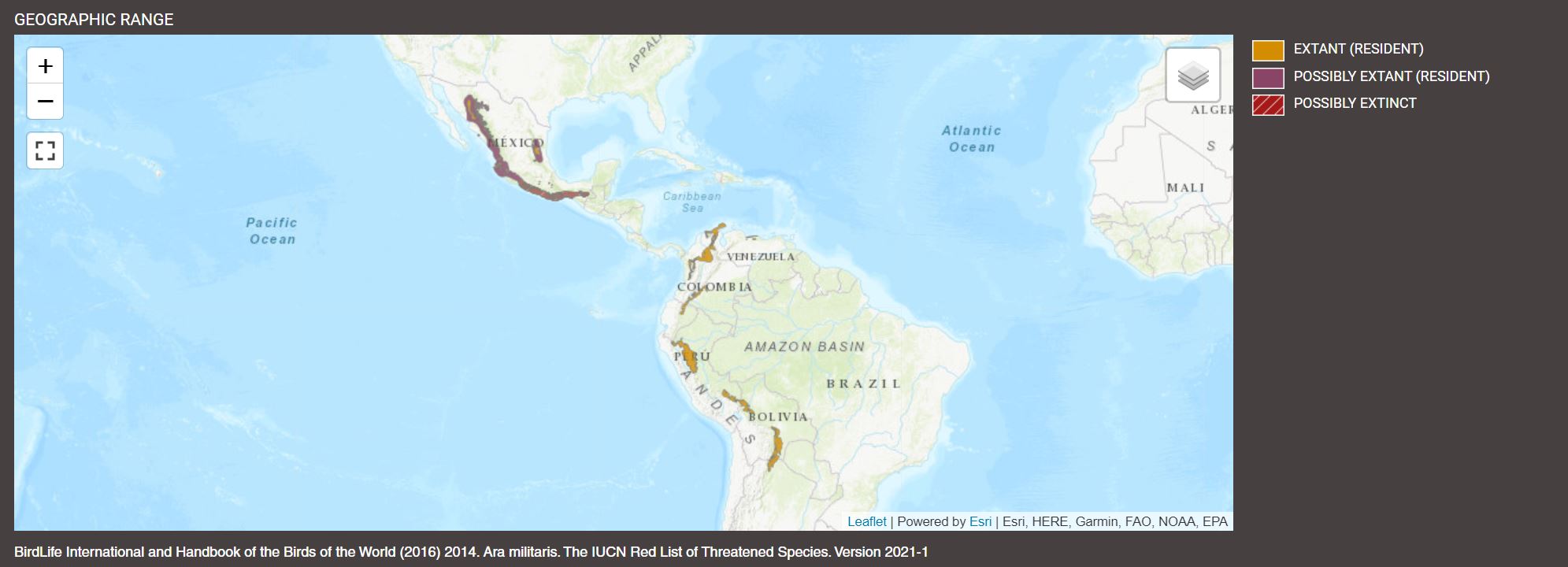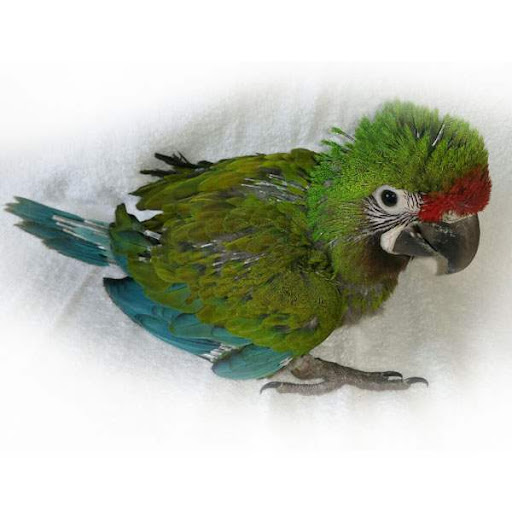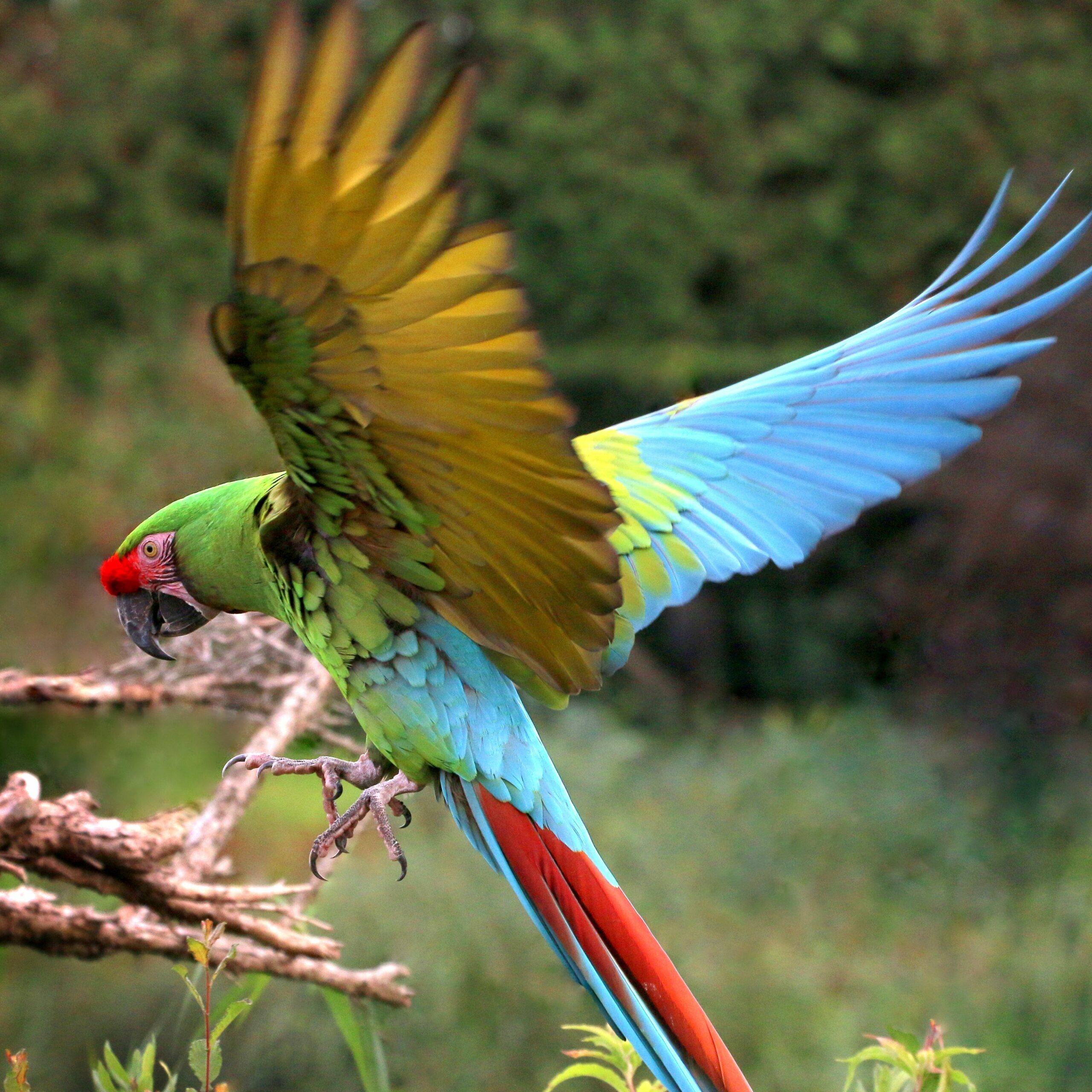
Military Macaw
KINGDOM: Animalia
PHYLUM: Chordata
CLASS: Aves
ORDER: Psittaciformes
FAMILY: Psittacidae
GENUS: Ara
SPECIES: Ara militaris
POPULATION SIZE: 20,000
LIFE SPAN: 60 YRS
WEIGHT: 75-157 G
LENGTH: 25-30 CM
WINGSPAN: 110 CM
TOP SPEED: 55 KM/H
Where to find the
Military Macaw
The Military macaw inhabits small areas of both Central and South America, from Bolivia to western Mexico, western Venezuela and north-western Argentina. They live mainly in semi-arid temperate mountainous areas, and in deciduous tropical forests, near water. They move seasonally to lowlands, occurring in thorn woodlands and humid forests.
How the
Military Macaw
lives
Military macaws live in pairs or family groups. They are also often seen in flocks with as many as 40 birds in communal roosts on cliff faces or in tall trees, where they go to sleep at night. They are very noisy and make themselves conspicuous at the time of dawn and dusk, while they fly between the roosting and feeding areas. During such flights, mating pairs fly close together. When at rest during the day, the birds perch in the tops of exposed dead trees. Military macaws migrate seasonally to eat particular fruits, and move about locally in many regions. Their beaks are used as a “third hand” when they move about or climb in trees, enabling them to climb easily with the help of their feet and beak. Military macaws are often heard before they are seen, identified by their loud screeching and croaking.
How many
Military Macaw
are there?
Population threats
The main cause of the huge decline in numbers of Military macaws is the pet trade. Loss of habitat is another significant reason for the reduction of their numbers, through deforestation for agriculture and cattle ranching.
Population number
According to the IUCN Red List, the total population size of the Military macaw is 10,000-20,000 individuals, including 6,000-15,000 mature birds. This species’ numbers are decreasing today and it is classified as vulnerable (VU) on the list of threatened species.
Ecological niche
Military macaws have an important role in spreading seeds for the plants, fruits and berries that they eat.






